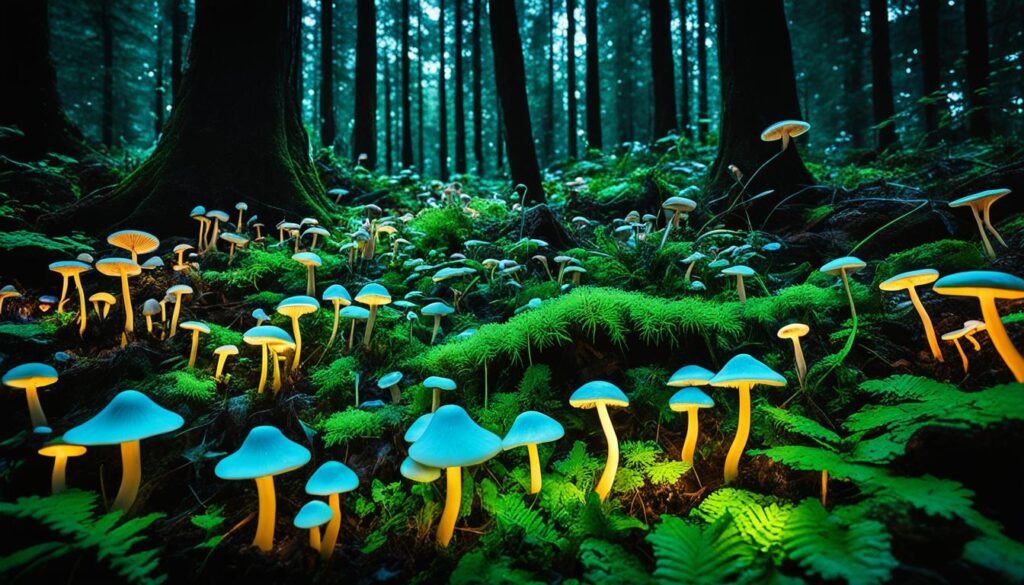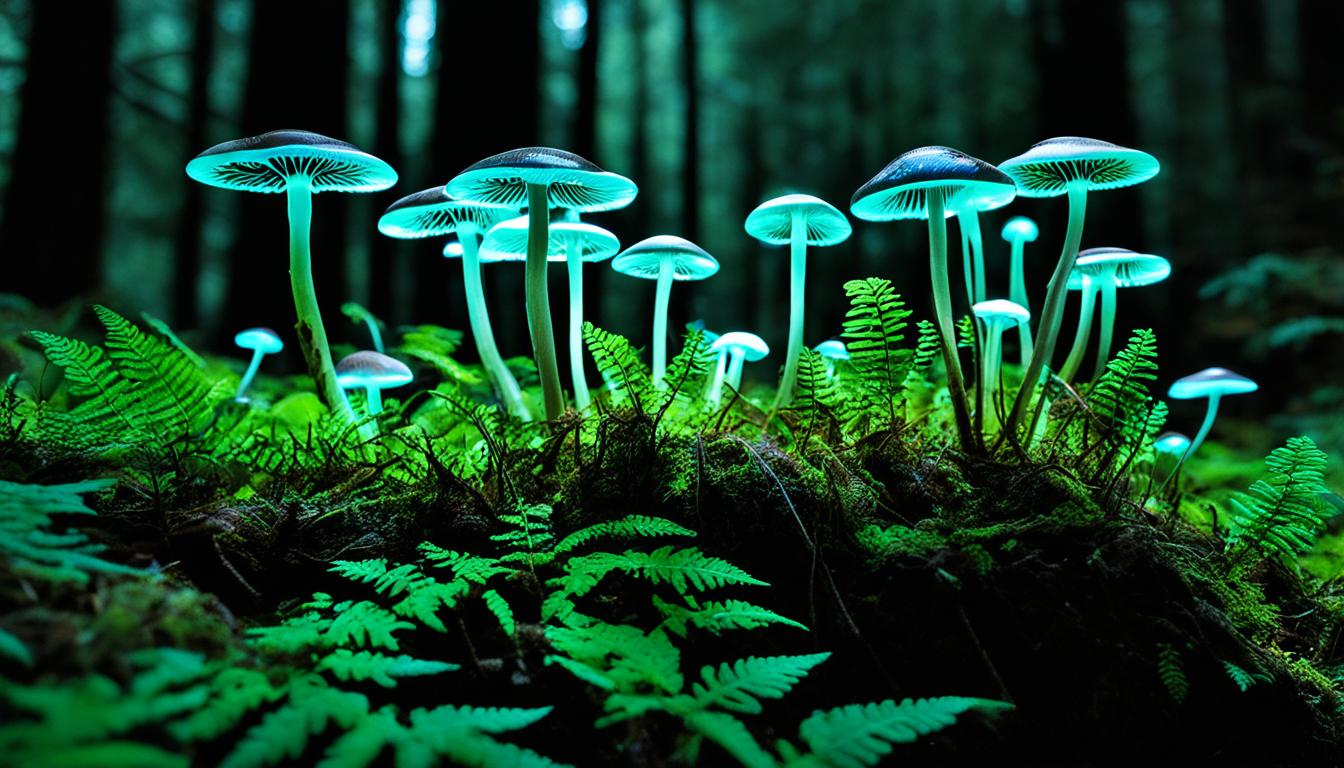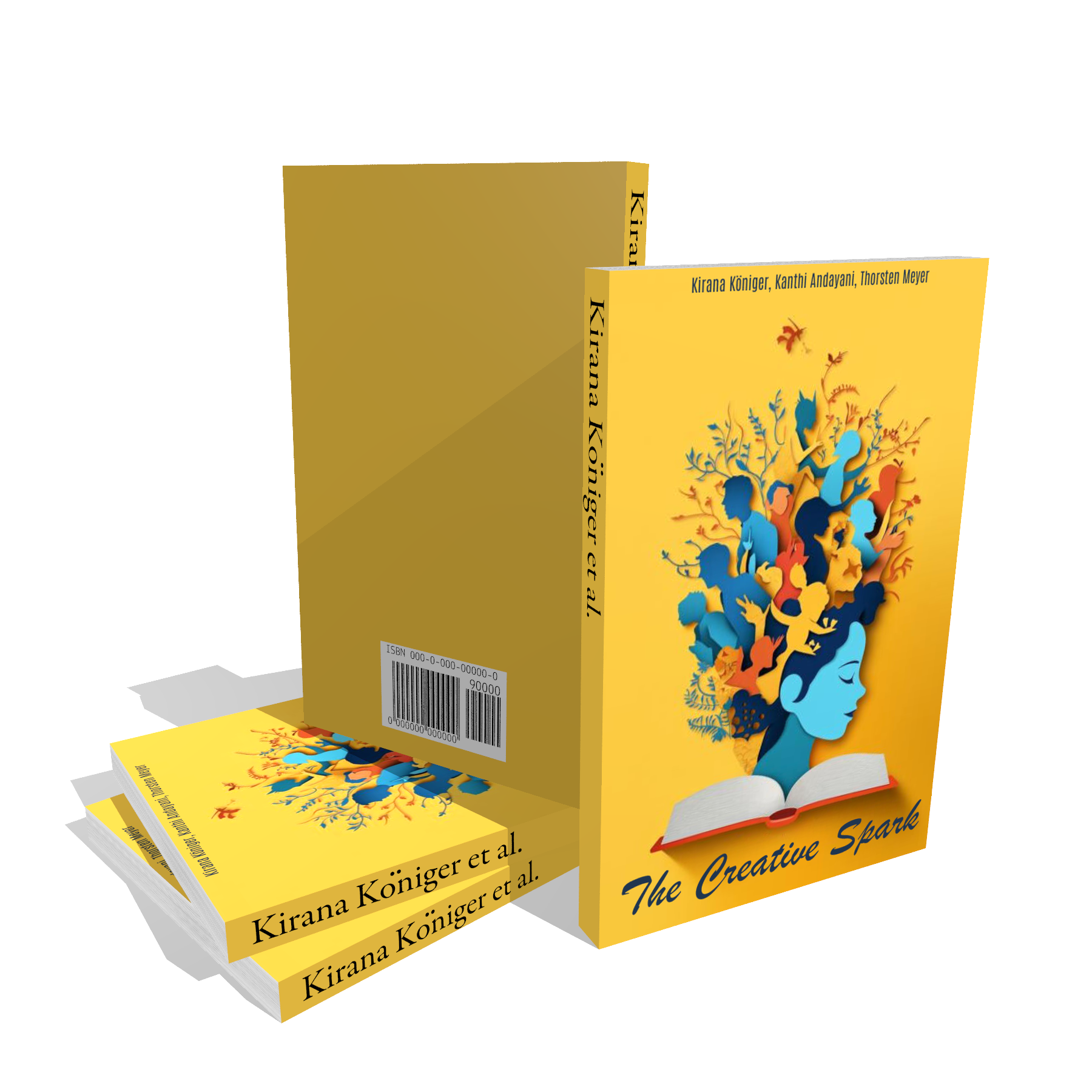Did you know only 71 of around 100,000 fungal species glow? This fact shows how rare and mysterious glowing fungi are. These cool mushrooms light up dark spots on Earth, especially in the Amazon rainforest. The Amazon is full of life and amazing things. Bioluminescent mushrooms are not just cool to look at. They teach us a lot about how fungi live and evolve in their environments.
We’re about to dive into why these fungi glow, their role in nature, and what scientists have learned about them. Get ready to explore a world where natural light shows us hidden wonders of our planet.
Key Takeaways
- Only 71 species of fungi exhibit bioluminescence out of over 100,000 described species.
- These glowing fungi are predominantly found in tropical regions, highlighting biodiversity hotspots.
- Bioluminescent fungi may serve specific ecological functions, like attracting insects for spore dispersal.
- Recent discoveries, including new species, emphasize the need for continued exploration of these organisms.
- The study of bioluminescent mushrooms intertwines both science and the natural wonders of our world.
Introduction to Bioluminescence
Bioluminescence is a cool natural light show created by living things. It happens through complex chemical reactions. Fireflies and deep-sea creatures are some examples. This light helps in communication, catching food, and staying safe.
Bioluminescence in fungi is especially interesting to scientists. They’re trying to figure out why fungi glow. One idea is that the light attracts bugs to help spread fungi spores. Some mushrooms glow all the time, even when it’s light outside.
Certain glow-in-the-dark fungi, like Brazil’s Flor de Coco, shine brightest at night. This shows how important glowing can be in the wild, helping fungi attract insects. Learning about bioluminescence opens up the amazing world of nature, including glowing fungi.
The Enigmatic World of Fungi
The kingdom of fungi is complex and mostly unexplored, with around 100,000 known species. These organisms help ecosystems by recycling nutrients and forming vital relationships with plants. Only 113 mushroom species can glow, making them rare and fascinating.
The Mycenaceae family stands out in the mushroom world for its many glowing species. This variety shows the rich complexity of fungal life. To correctly identify Mycena species, experts use microscopy or DNA sequencing. These methods help us understand the wide range of glowing mushrooms.

Mycena “Crystal Falls” shows how these glowing fungi adapt to different plants. Mycena “Nile River” lights up the area around Lake Brunner with its glowing fruit bodies, showcasing nature’s beauty. Meanwhile, Mycena “Taranaki” glows mainly through its mycelium in certain forests.
Some mushrooms, like M. roseoflava, glow mostly in their stems. Observing their faint light requires special attention, highlighting their secretive nature. Recent discoveries in Stewart Island reveal more about glowing fungi, their habitats, and roles in nature.
| Mushroom Species | Bioluminescence Location | Habitat Preference |
|---|---|---|
| Mycena “Nile River” | Fruit Bodies | Near Lake Brunner |
| Mycena “Crystal Falls” | General Structure | Native and Exotic Plants |
| Mycena “Taranaki” | Mycelium | Beech-Broadleaved Forests |
| M. roseoflava | Stipe | Throughout New Zealand |
Learning about fungi diversity opens a door to a world full of wonders. The link between these organisms and their environments is key. It’s important for both science and conservation efforts to protect this unique diversity.
What are Bioluminescent Mushrooms?
Bioluminescent mushrooms are interesting fungi that can light up. This happens through a chemical reaction in their cells. They use luciferin, a substance that emits light, and luciferase, an enzyme. More than 70 types of these mushrooms can glow, creating a magical view in forests.
The Science Behind Their Glow
The glow of these mushrooms comes from luciferin and luciferase working together. This process makes a greenish light that we can see. The brightness can change based on things like pH, light, and temperature. It shows how the mushroom’s activity can affect its glow. All bioluminescent mushrooms use a similar way to glow, which may tell us they have a common ancestor.
Examples of Notable Species
There are many glowing mushrooms. Some standout ones are:
- Omphalotus illudens (Jack-o-Lantern mushroom) – Known for its bright bioluminescent qualities, this species resembles edible chanterelles, yet it’s toxic.
- Mycena chlorophos (Green pepe) – Found in regions like Indonesia and Australia, this mushroom adds a vivid glow to its habitat.
- Armillaria mellea – The most widely distributed luminescent fungus, present in multiple regions across the globe.
- Mycena pura (Lilac bonnet) – Thrives primarily in Great Britain and Ireland, showcasing its unique coloration amidst its glow.
- Neonothopanus gardneri – This rare species attaches to young palm leaves, found primarily in Brazil.
These examples show the variety of glowing mushrooms. Each type teaches us something about how they light up and their place in nature.

Exploration of the Amazon Rainforest
The Amazon rainforest is known for its vast biodiversity. It is a jewel for scientists and nature lovers. On an extensive trip to document the region’s varied life, researchers found something amazing—a new mushroom called Luminiscens amazonicus.
Discovery of the “Luminiscens amazonicus”
This mushroom not only increases the life variety in the Amazon but highlights the world of bioluminescent fungi. These fungi are uncommon and not much studied. The team, with botanists, mycologists, and ecologists, saw its soft, bluish-green light. This magical light shows us that nature can still surprise us, even in well-known places.
Research Team’s Findings
The Luminiscens amazonicus‘ glow helps scientists understand how these mushrooms live in their habitats. They hope to find uses for this mushroom, like in eco-friendly lighting. Dr. Maria Rodriguez and her team work with environmental groups and locals. They focus on conserving this glowing mushroom in the Amazon.

Historical Accounts of Bioluminescent Fungi
People have been amazed by glowing fungi since ancient times. It’s a part of many cultures around the world. Aristotle, a famous thinker from 382 B.C., was one of the first to write about them. His work made others curious too. In the 19th century, scholars found out that the glow in mine supports came from these fungi.
Different cultures have known about these glowing mushrooms, calling them by names like “foxfire.” This name comes from Old French, meaning “false fire.” These mushrooms were not just interesting, they were useful. People used their glow for light and believed in their healing powers too.
Bioluminescent fungi have always been fascinating. Nowadays, scientists understand more about how they glow. This helps us connect ancient stories with what we know today. It shows our constant wonder at the world’s mysteries.

The Chemistry of Mushroom Luminescence
Mushroom luminescence is a magic of chemistry. It happens when two chemicals, luciferase and luciferin, work together. These chemicals start the glow we see in some mushrooms.
Role of Luciferase and Luciferin
Luciferase is an enzyme. It starts a reaction with luciferin, a molecule that can shine. This creates a beautiful glow. The reaction changes chemical energy into light. That’s why some mushrooms look like they have lights.
These chemicals are not just for show. Scientists study them to learn about mushrooms’ evolution. They discover why glowing is good for mushrooms. For example, it helps attract insects. This spreads their spores far and wide.
In a concise overview, here’s a table capturing essential details about the luciferase-luciferin interaction:
| Chemical Compound | Role | Importance |
|---|---|---|
| Luciferase | Enzyme that catalyzes the luminescent reaction | Critical for initiating light emission |
| Luciferin | Molecule that emits light when oxidized | Responsible for the actual glow in fungi |

Studying these glowing mushrooms opens a window to understanding life’s adaptability. Every glowing mushroom showcases millions of years of evolution. Luciferase and luciferin lead this extraordinary natural show.
Ecological Significance of Light-Emitting Fungi
Bioluminescent fungi are key players in the ecosystem. They break down dead material and affect food chains. There are about 71 glowing fungi types known, out of more than 100,000 fungi species. The Neonothopanus gardneri species, found again in central Brazil, is especially interesting. It shines brightly and plays a big part in its environment.

Their light draws in insects like beetles, flies, wasps, and ants. This helps spread their spores, helping fungi grow and survive. Some beetles are really attracted to this light, showing how important glowing is for nature.
Scientists have found these fungi have a special clock that controls their glow. This discovery helps us understand how they live and spread. The different looks of glowing mushrooms, for example, the ghost fungus (Omphalotus nidiformis), show how varied these life forms can be.
Many cultures see glowing fungi as magical or spiritual. In Japan, they’re thought to guide lost people. In Central and South America, they’re seen as connections to ancestors. These beliefs add to our fascination with these organisms.
Research in places like Costa Rica’s cloud forests shows that glowing fungi are good at attracting bugs. Tests with LED lights show that green light works best for this. This supports the idea that glowing fungi have an important role in nature. Their study connects ecology and cultural history.
| Fungi Species | Known for | Ecological Role |
|---|---|---|
| Neonothopanus gardneri | Bright bioluminescence | Attracting invertebrates for spore dispersal |
| Omphalotus nidiformis | Eerie greenish glow | Enhancing ecosystem interactions |
| General bioluminescent fungi | Spiritual significance in cultures | Nutrient recycling and biodiversity support |
Practical Applications of Bioluminescent Mushrooms
Bioluminescent mushrooms are more than just pretty. They could change how we light up our world. They glow without needing standard power. This could let us light up places in new, energy-saving ways.
Potential for Energy-Efficient Lighting Solutions
Some mushrooms glow in a way that’s good for the environment. Imagine walking in a park lit by these mushrooms. It would cut down our energy use a lot. Scientists are looking into how to use this for eco-friendly lighting. This could transform our nights.

Conservation Efforts and Community Engagement
Protecting these mushrooms means taking care of their homes. We have to fight against habitat loss, climate change, and pollution. People living nearby are key to this. They help with awareness and looking after these places well.
Getting locals involved strengthens the fight to save these mushrooms. They help keep these amazing fungi around for the future. Working together is crucial.
| Aspect | Details |
|---|---|
| Bioluminescence Occurrence | 81 out of 100,000 known fungi species |
| Light Emission | Emits green light at 520–530 nm; some species show blue and yellow |
| Conservation Threats | Habitat loss, climate change, pollution |
| Community Role | Engagement in conservation and management efforts |
| Research Funding | R$ 328,413.09 (Research Project), R$ 457,741.18 (Young Researcher Project) |
Conclusion
The world of bioluminescent mushrooms is truly fascinating. These mushrooms light up nature in the most stunning ways. They’re not just pretty; they play important roles in nature.
Some examples include Armillaria mellea and Mycena chlorophos. These mushrooms glow to attract insects or scare off enemies. This shows the incredible ways they’ve adapted to survive.
Scientists are busy studying these mushrooms. They’re learning how their glow works. This could lead to things like eco-friendly lights or ways to monitor the environment’s health.
But we all need to help protect these special mushrooms. Pollution and losing their homes is a big threat. We can make a difference by learning and teaching others about them.
It’s up to us to look after these glowing wonders. By knowing more and caring for their homes, we can keep their magic alive. Let’s pledge to protect these natural treasures for all to see.








